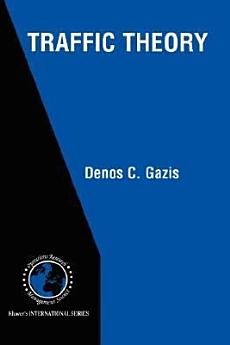Traffic Theory
এপ্ৰিল ২০০৬ · International Series in Operations Research & Management Science কিতাপ 50 · Springer Science & Business Media
ইবুক
259
পৃষ্ঠা
reportমূল্যাংকন আৰু পৰ্যালোচনা সত্যাপন কৰা হোৱা নাই অধিক জানক
এই ইবুকখনৰ বিষয়ে
“Everything should be made as simple as possible—but not simpler” Albert Einstein Traffic Theory, like all other sciences, aims at understanding and improving a physical phenomenon. The phenomenon addressed by Traffic Theory is, of course, automobile traffic, and the problems associated with it such as traffic congestion. But what causes congestion? Some time in the 1970s, Doxiades coined the term "oikomenopolis" (and "oikistics") to describe the world as man's living space. In Doxiades' terms, persons are associated with a living space around them, which describes the range that they can cover through personal presence. In the days of old, when the movement of people was limited to walking, an individual oikomenopolis did not intersect many others. The automobile changed all that. The term "range of good" was also coined to describe the maximal distance a person can and is willing to go in order to do something useful or buy something. Traffic congestion is caused by the intersection of a multitude of such "ranges of good" of many people exercising their range utilisation at the same time. Urban structures containing desirable structures contribute to this intersection of "ranges of good". xii Preface In a biblical mood, I opened a 1970 paper entitled "Traffic Control -- From Hand Signals to Computers" with the sentence: "In the beginning there was the Ford".
এই ইবুকখনক মূল্যাংকন কৰক
আমাক আপোনাৰ মতামত জনাওক।
পঢ়াৰ নির্দেশাৱলী
স্মাৰ্টফ’ন আৰু টেবলেট
Android আৰু iPad/iPhoneৰ বাবে Google Play Books এপটো ইনষ্টল কৰক। ই স্বয়ংক্রিয়ভাৱে আপোনাৰ একাউণ্টৰ সৈতে ছিংক হয় আৰু আপুনি য'তে নাথাকক ত'তেই কোনো অডিঅ'বুক অনলাইন বা অফলাইনত শুনিবলৈ সুবিধা দিয়ে।
লেপটপ আৰু কম্পিউটাৰ
আপুনি কম্পিউটাৰৰ ৱেব ব্রাউজাৰ ব্যৱহাৰ কৰি Google Playত কিনা অডিঅ'বুকসমূহ শুনিব পাৰে।
ই-ৰীডাৰ আৰু অন্য ডিভাইচ
Kobo eReadersৰ দৰে ই-চিয়াঁহীৰ ডিভাইচসমূহত পঢ়িবলৈ, আপুনি এটা ফাইল ডাউনল’ড কৰি সেইটো আপোনাৰ ডিভাইচলৈ স্থানান্তৰণ কৰিব লাগিব। সমৰ্থিত ই-ৰিডাৰলৈ ফাইলটো কেনেকৈ স্থানান্তৰ কৰিব জানিবলৈ সহায় কেন্দ্ৰত থকা সবিশেষ নিৰ্দেশাৱলী চাওক।








